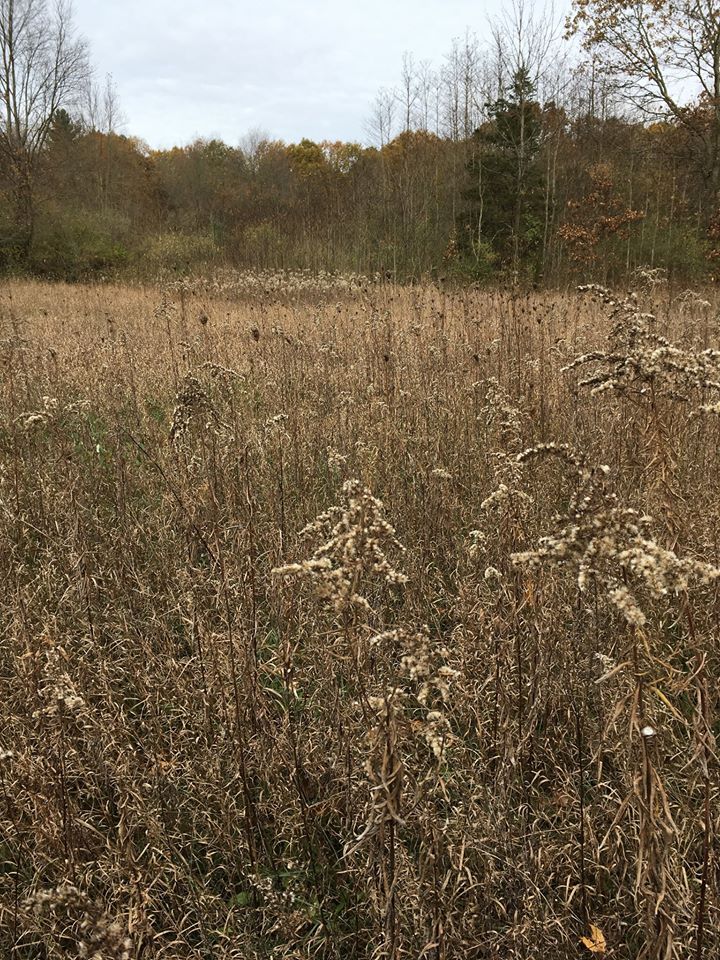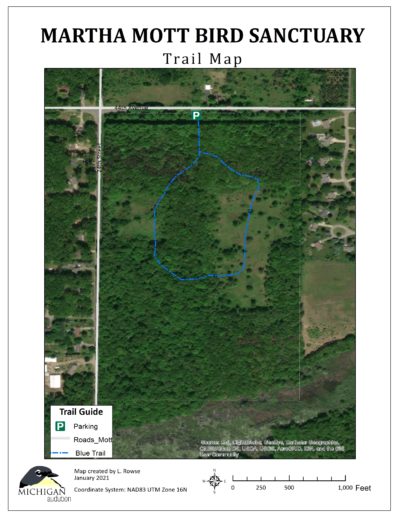 Amenities: Parking. Social Trails. No Restrooms.
Amenities: Parking. Social Trails. No Restrooms.
Martha Mott Bird Sanctuary contains 80 acres of wildlife habitat in Almena Township (east-central Van Buren County). The sanctuary is bordered on north and west by well-traveled county roads: 24th Street and 44th Avenue. On the east, residential development and old fields border the sanctuary. To the south, a private landowner keeps their land in a natural state, with wetland and Hayden Creek running between the two properties. This creek is part of the Paw Paw River’s headwaters, and as such, protecting habitat and wetland areas that flow into this watershed is important for clean water.
Our overall goals for this bird sanctuary are to return the habitat to its pre-settlement climax forest conditions, which historically was oak savanna. Habitat restoration will include monitoring and suppression of invasive plant species such as autumn olive, garlic mustard, smooth bromegrass, spotted knapweed, and multiflora rose. The local community and neighbors will ideally value the sanctuary for its benefits to birds and wildlife and visit the sanctuary to use the trails and spend time connecting to nature.
Directions
Parking: 8-car gravel lot on 44th Avenue
GPS coordinates of parking lot: 42.259064, -85.783092
From the intersection of 24th Street and 44th Avenue in Van Buren County, go east on 44th Avenue 0.2 miles to the parking lot on the south side of the road.
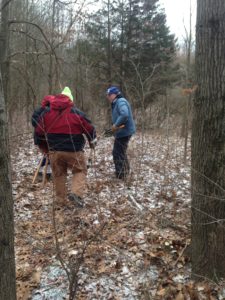
Volunteers clear and mark the blue trail at Martha Mott Bird Sanctuary. Photo by Linnea Rowse
Trails
0.7-mile social trail, marked with blue diamond markers. Volunteers and community members maintain the trails and notify Michigan Audubon of any major needs. The trail makes a loop, however, it is currently difficult to follow through the meadow on the east side of the sanctuary. Use caution and if you are unsure, do an out and back hike to follow the well-marked portion of the trail. The sanctuary has a gentle slope toward its southern end, and the trail is primarily flat with minor inclines. The trail surface is packed dirt. Walking, cross-country skiing, and snowshoeing are great activities to do there! Dogs are allowed on-leash only.
Download the trail map here.
History of Martha Mott Bird Sanctuary
Charles Mott, his daughter Leone Besh-Getoor, and her husband David, founders of the Be-Mo Potato Chip Company, donated this land as a living memorial to Mott’s wife, Martha. At the time, Mr. Mott was 100 years old. The sanctuary was dedicated on October 10, 1971.
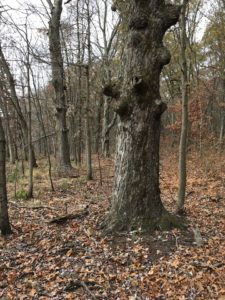
Mature trees near Hayden Creek at Martha Mott Bird Sanctuary. Photo by Ellie Klemm
Natural Communities
Although there are many classification systems used to describe biomes, ecosystems, and local communities, Michigan Audubon chooses to use Bird Conservation Units, as defined by Partners in Flight, for major biome and sub biome classifications. Locally, we use the Michigan Natural Features Inventory classification system to describe local community types. This sanctuary is located in the Prairie Biome and the Prairie-Hardwood Transitional Forest Bird Conservation Unit.
Regionally, the landscape is mostly residential and agricultural within ten miles of the sanctuary, except for some heavily wooded swamp to the northwest.
Before its land use as a farmstead and woodlot, the sanctuary habitat was once oak savanna, but with the suppression of fire, the habitat has changed over time to a mostly mature oak-hickory forest. There is also a remnant stand of pine plantation on the northern end of the sanctuary.
Bird Species of Note
More than 100 species of birds have been recorded at Martha Mott Bird Sanctuary. If you eBird, help us add to this list using the hotspot “Mott Bird Sanctuary.” You may expect to see many forest generalists and shrub/grassland transition generalists. The shrubby meadow openings at this sanctuary are not large enough to support specialist grassland birds, however. In spring, look for warblers, Scarlet Tanager, and Eastern Wood-Pewee. Eastern Towhee and Gray Catbird may breed in shrubby forest transition areas. Red-eyed Vireo, Eastern Bluebird, and Field Sparrow are also commonly observed here.
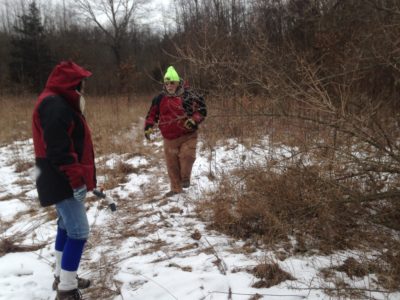
Volunteers clear autumn olive, an invasive species, at Martha Mott Bird Sanctuary. Photo by Linnea Rowse
Projects/Volunteer Opportunities
We need trail monitors to help with clearing fallen branches or trees and to report any illegal use of the land, including hunting. Monitors may also help keep the kiosk board up to date with seasonal bird highlights and pick up trash from the parking area. Michigan Audubon staff will also work with interested volunteers to suppress invasive plant species.
There exists an old bluebird nest box trail at Martha Mott Bird Sanctuary. If you are interested in helping to replace and monitor these boxes, please get in touch with us!
We are currently working to update trail maps for Michigan Audubon bird sanctuaries and to have interactive maps that visitors can access online or on their phones. If you have experience creating interpretive trail maps, and would like to help, let us know!
Finally, plant and bird surveys are needed at this sanctuary! Flora surveys were recorded in 1977 and 1991, and we would love your help in updating the list of plant species at the sanctuary. Contact us to learn more about conducting a survey. You can also use eBird and iNaturalist to record birds, plants, and more while you’re visiting the sanctuary!
Learn more about volunteering and fill out a volunteer application form here: https://www.michiganaudubon.org/get-involved/volunteer/
Michigan Audubon maintains a statewide network of bird sanctuaries. The network consists of 18 sanctuary properties that together total nearly 4,000 acres. The habitats we protect and steward include rivers, lakes, marshes, bogs, fens, grasslands, hardwoods, and northern conifer forests. Each property plays a critical role in protecting Michigan native plants and animals, including both endangered and threatened species.
Learn more about Michigan Audubon bird sanctuaries at michiganaudubon.org/our-conservation-impact/bird-sanctuaries.

